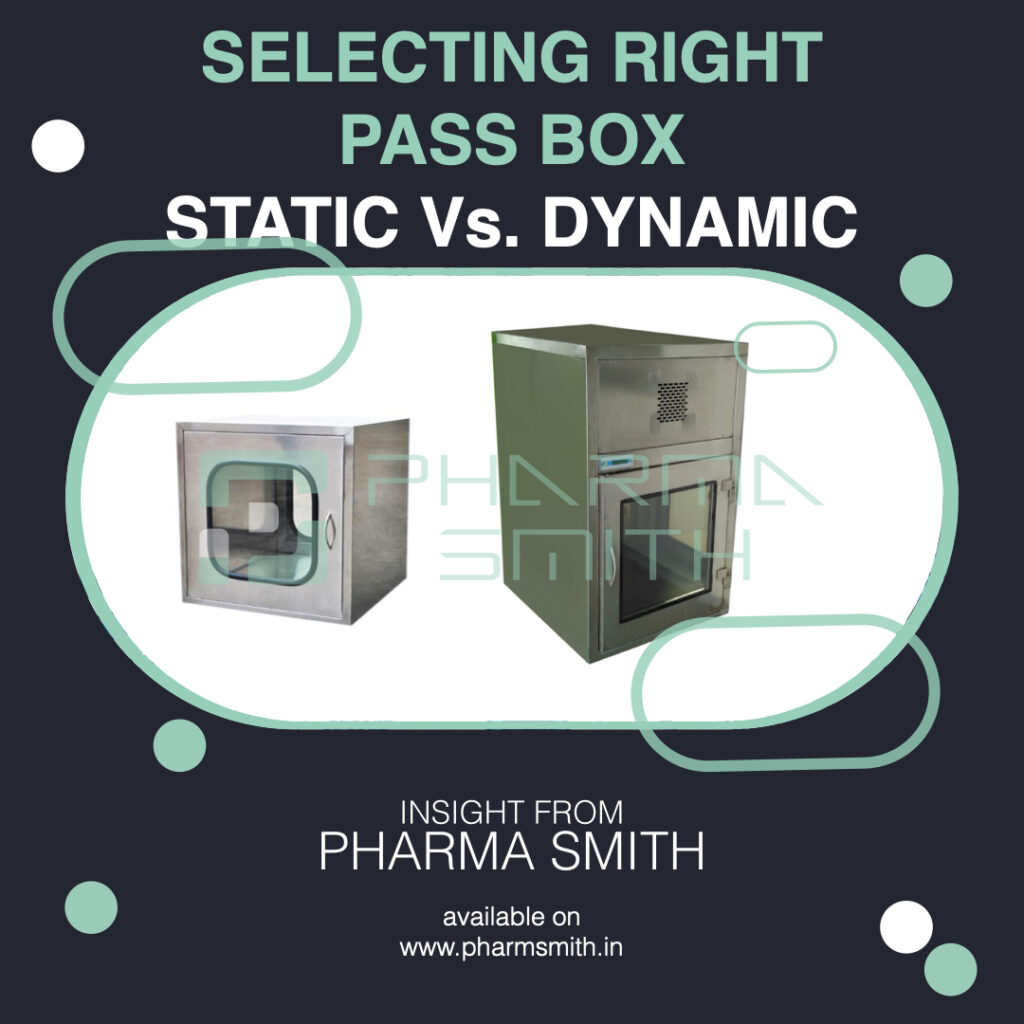Dynamic vs. Static Pass Boxes in Pharmaceutical Environments
In the world of pharmaceutical manufacturing, keeping things sterile and controlled is crucial. Cleanrooms are essential for maintaining the integrity of pharmaceutical processes, and pass boxes play a key role in this setup. They help transfer materials between different cleanroom areas without letting contaminants in. Let’s dive into the differences between dynamic and static pass boxes and see how they benefit the pharmaceutical industry.
Understanding Pass Boxes
Pass boxes act as barriers to keep contaminants out when transferring materials. There are two main types: dynamic and static.
Static Pass Boxes
Static pass boxes are the more traditional option, with a simple and cost-effective design. They have a fixed internal chamber and are perfect for transferring non-sensitive materials that don’t need extra environmental control. You’ll often find them used for moving supplies, paperwork, or equipment between cleanroom spaces with similar cleanliness levels.
Advantages of Static Pass Boxes:
- Cost-effective solution: Static pass boxes are generally more affordable, making them a budget-friendly option for many facilities.
- Simple design and easy to maintain: Their straightforward design means fewer components that can fail, leading to lower maintenance requirements.
- Suitable for transferring non-sensitive materials: Ideal for items that do not require stringent environmental controls.
Dynamic Pass Boxes
Dynamic pass boxes are a more sophisticated solution, incorporating additional features to enhance environmental control during material transfer. These boxes are equipped with built-in HEPA or ULPA filters, ensuring the removal of particles and microorganisms from the materials being transferred. Dynamic pass boxes are particularly useful when dealing with sensitive pharmaceutical products that demand a higher level of cleanliness.
Advantages of Dynamic Pass Boxes:
- Enhanced environmental control with built-in filtration systems: These filters ensure that the air inside the pass box is free from contaminants, protecting sensitive materials.
- Ideal for the transfer of sensitive pharmaceutical materials: Provides an added layer of protection for materials that are highly susceptible to contamination.
- Helps maintain a higher level of cleanliness in the cleanroom: Ensures that the cleanroom environment remains uncontaminated during material transfers.
Choosing the Right Pass Box for Pharmaceutical Applications
The selection between dynamic and static pass boxes depends on the specific requirements of the pharmaceutical manufacturing process. Factors to consider include the nature of the materials being transferred, the required cleanliness level, and the overall cleanroom design.
1. Material Sensitivity
If the pharmaceutical materials being transferred are highly sensitive to contamination, dynamic pass boxes with advanced filtration systems are preferable. These boxes provide an added layer of protection, ensuring that the integrity of the materials is maintained during transfer.
2. Cleanroom Classification
The cleanroom classification is a critical factor in choosing between dynamic and static pass boxes. In environments where maintaining a lower level of particle count is crucial, dynamic pass boxes are the preferred choice due to their superior filtration capabilities.
3. Cost Considerations
While dynamic pass boxes offer enhanced features, they come at a higher cost compared to static pass boxes. Pharmaceutical companies need to evaluate their budget constraints and weigh the benefits of additional environmental control against the associated costs.
Conclusion
Choosing the right pass box for your facility is a critical decision that can impact the efficiency and safety of your pharmaceutical manufacturing process. By understanding the differences between dynamic and static pass boxes and considering factors such as material sensitivity, cleanroom classification, and cost, you can make an informed choice that best suits your facility’s needs.
